alexandercoppock.com
Persuasion in Parallel: https://alexandercoppock.com/coppock_2023.html
Research Design: Declaration, Diagnosis, and Redesign: book.declaredesign.org
Had fun reconstructing the data from this 90-year old persuasion experiment that shows that "wet" and "dry" college students update their attitudes in the direction of counterattitudinal persuasive information.
paper: doi.org/10.1080/0022...



Had fun reconstructing the data from this 90-year old persuasion experiment that shows that "wet" and "dry" college students update their attitudes in the direction of counterattitudinal persuasive information.
paper: doi.org/10.1080/0022...
I think the response to this good point from @anatosaurus.bsky.social is not to abandon survey exps but instead to measure "getting heard" (attention) also.

I think the response to this good point from @anatosaurus.bsky.social is not to abandon survey exps but instead to measure "getting heard" (attention) also.

It all started because of a PNAS paper that claimed that the noun form it increased voter turnout (relative to the verb form ) by 11 to 14 percentage points.
It keeps not replicating, obviously.
Most recently doi.org/10.1017/bpp....


It all started because of a PNAS paper that claimed that the noun form it increased voter turnout (relative to the verb form ) by 11 to 14 percentage points.
It keeps not replicating, obviously.
Most recently doi.org/10.1017/bpp....
Separately, this figure is amazing:
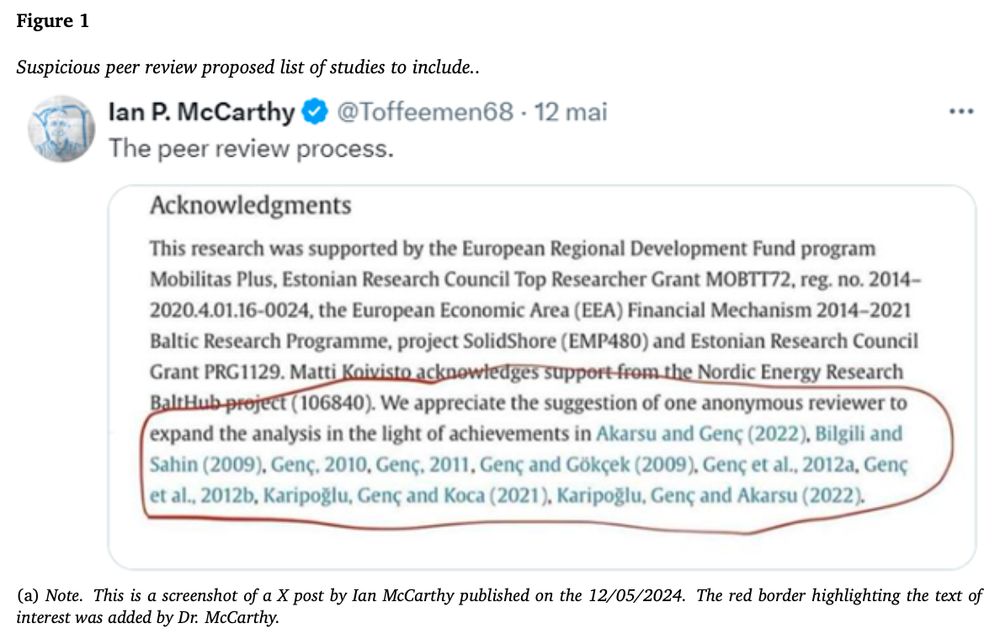
Separately, this figure is amazing:

Collective Delusion In The Social Sciences: Publishing Incentives For Empirical Abuse
doi.org/10.1111/j.15...
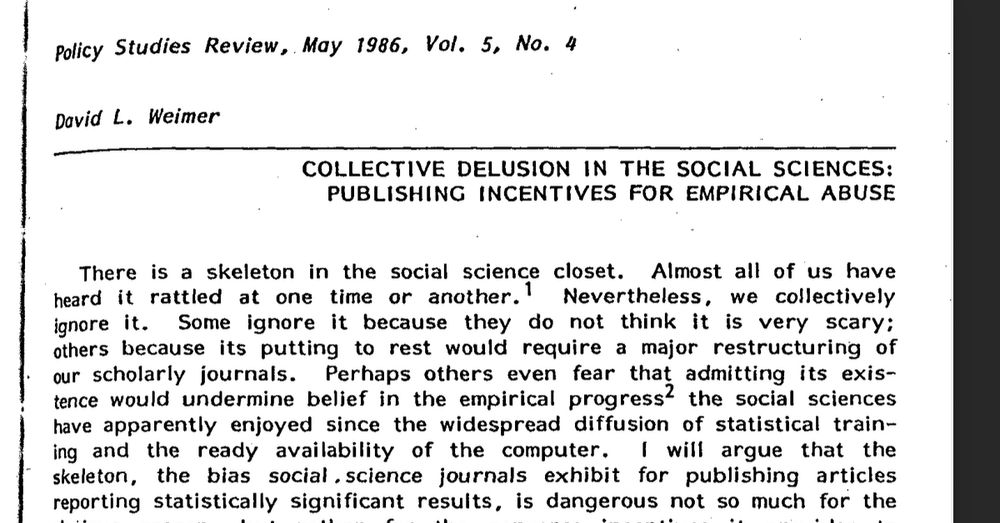


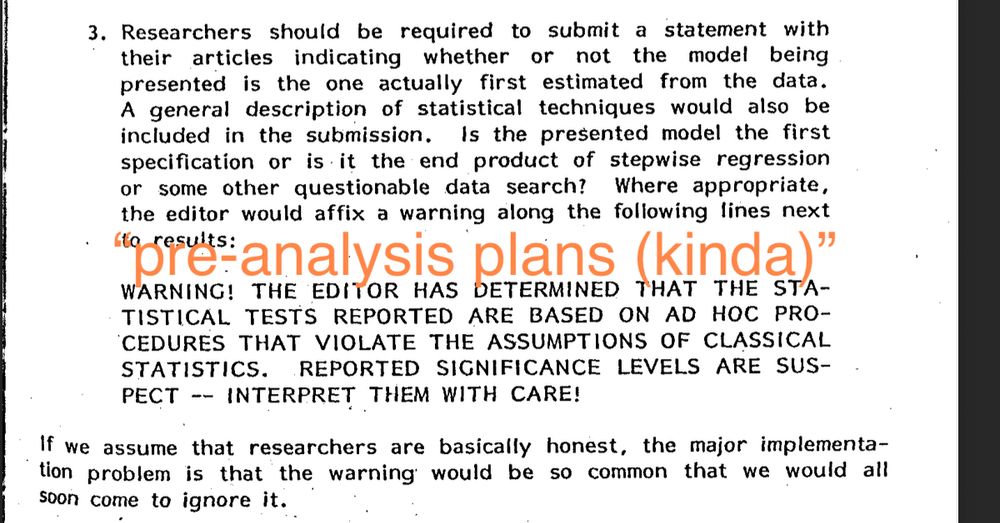
Collective Delusion In The Social Sciences: Publishing Incentives For Empirical Abuse
doi.org/10.1111/j.15...
doi.org/10.1017/bpp....
377 ests in 77 exps: edutainment moves attitudes, norms, beliefs 📊
Effects persist ⏳
Many reasonable theories about effect heterogeneity are not supported 😇



doi.org/10.1017/bpp....
377 ests in 77 exps: edutainment moves attitudes, norms, beliefs 📊
Effects persist ⏳
Many reasonable theories about effect heterogeneity are not supported 😇

btw you *can* write your own handler as you did here (which is v. flexible and extensible) but you can also do many post-estimation things with the .summary argument if you like!

btw you *can* write your own handler as you did here (which is v. flexible and extensible) but you can also do many post-estimation things with the .summary argument if you like!
literally just:
weird_trick = D * X
iv_robust(weird_trick ~ D | Z)
to get the mean of X among compliers!


literally just:
weird_trick = D * X
iv_robust(weird_trick ~ D | Z)
to get the mean of X among compliers!
Also any paragraph that starts this way is a big 🚩

Also any paragraph that starts this way is a big 🚩
alexandercoppock.com/testing_with...


alexandercoppock.com/testing_with...

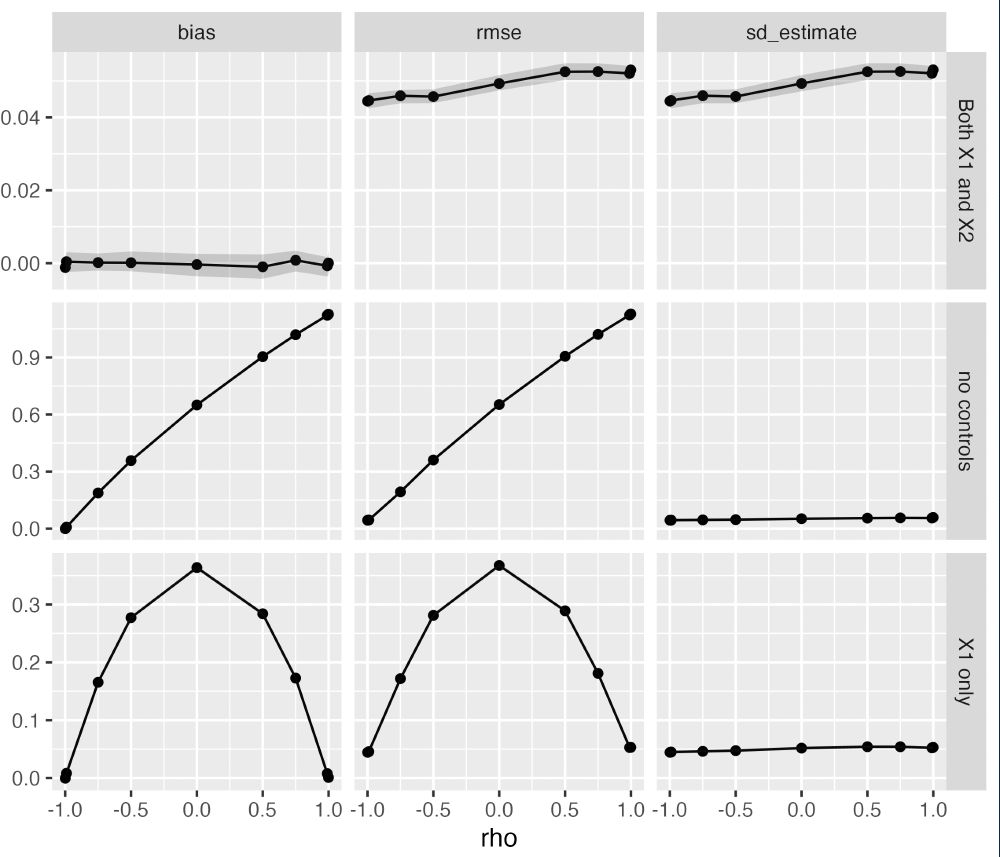



With my visualizations,
*what* I'm trying to convey is the experimental design and the results
*to whom* I'm trying to communicate is the community of scientists

With my visualizations,
*what* I'm trying to convey is the experimental design and the results
*to whom* I'm trying to communicate is the community of scientists
Anna appears to a tables > figures kind of scholar so no screenshots of results -- you'll have to click through to actually read this paper to learn what happened :)
doi.org/10.1111/ajps...

Anna appears to a tables > figures kind of scholar so no screenshots of results -- you'll have to click through to actually read this paper to learn what happened :)
doi.org/10.1111/ajps...
A major exception is how to deal with overplotting, since experiments often feature discrete treatments and discrete outcomes (binary or likert scales), e.g.:

A major exception is how to deal with overplotting, since experiments often feature discrete treatments and discrete outcomes (binary or likert scales), e.g.:
vayr stands for Visualize As You Randomize, which is a philosophy for design-based graphs.
The basic idea is that the visualization should both convey and respect the experimental design.
alexandercoppock.com/coppock_2020...

vayr stands for Visualize As You Randomize, which is a philosophy for design-based graphs.
The basic idea is that the visualization should both convey and respect the experimental design.
alexandercoppock.com/coppock_2020...
The vayr package version 1.0.0 is now on CRAN.
It contains position adjustments for ggplot2 that help with overplotting in pleasing ways. My favorite is position_sunflower().
- install.packages("vayr")
- alexandercoppock.com/vayr
#rstats #ggplot2 #dataviz


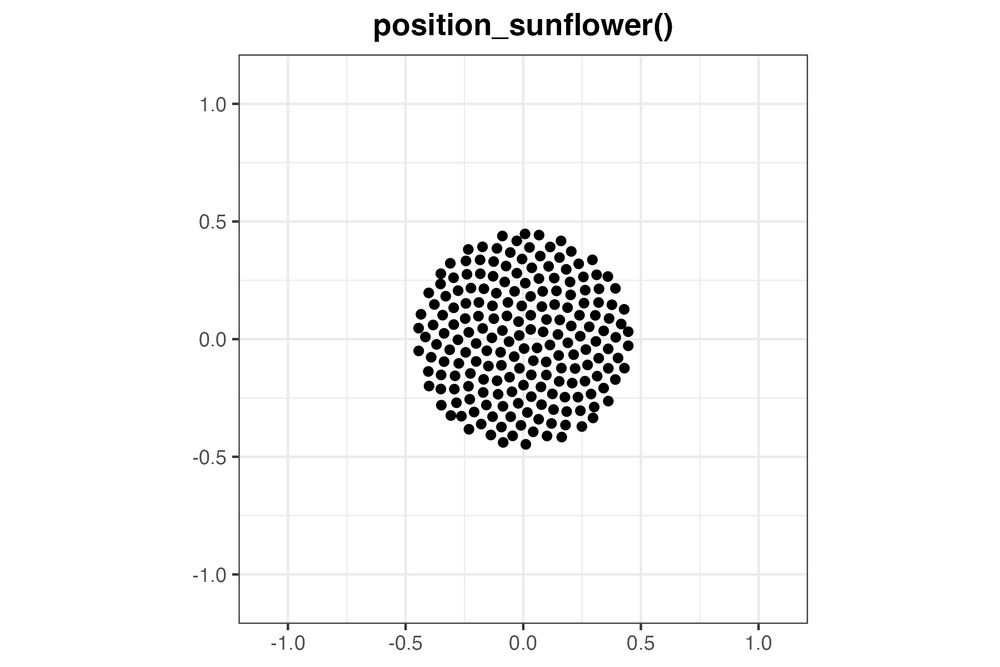

The vayr package version 1.0.0 is now on CRAN.
It contains position adjustments for ggplot2 that help with overplotting in pleasing ways. My favorite is position_sunflower().
- install.packages("vayr")
- alexandercoppock.com/vayr
#rstats #ggplot2 #dataviz
www.jstor.org/stable/31495...
That said, I agree there's no serious design distinction between single profile conjoint experiments and factorial experiments.

www.jstor.org/stable/31495...
That said, I agree there's no serious design distinction between single profile conjoint experiments and factorial experiments.





